Mad Hedge Biotech and Healthcare Letter
July 18, 2024
Fiat Lux
Featured Trade:
(FROM GOLDEN EGG TO DUD, AND BACK AGAIN?)
(PFE), (LLY), (NVO), (VKTX), (GILD), (GPCR), (BNTX)

Mad Hedge Biotech and Healthcare Letter
July 18, 2024
Fiat Lux
Featured Trade:
(FROM GOLDEN EGG TO DUD, AND BACK AGAIN?)
(PFE), (LLY), (NVO), (VKTX), (GILD), (GPCR), (BNTX)

Remember when Pfizer (PFE) was strutting around Wall Street like a rooster in a henhouse, clucking about their $10 billion-a-year weight-loss wonder drug?
Well, that golden egg turned out to be a dud, with safety issues and side effects sending their experimental pills to the scrap heap faster than you can say "clinical trial failure."
Just when we thought Pfizer had thrown in the towel, they're back in the ring, swinging with a new once-daily version of danuglipron and pushing it towards bigger studies.
But let me tell you, the market's about as excited as I am for a vegan BBQ. Pfizer's shares nudged up a measly 0.4% upon announcement, after a brief 2.9% spike that fizzled faster than a diet soda.
Now, let's talk about the 800-pound gorillas in the room: Eli Lilly's (LLY) Zepbound and Novo Nordisk's (NVO) Wegovy.
These weekly jabs are the current darlings of the weight-loss world, but everyone and their grandmother are scrambling to get an oral GLP-1 to market. It's like watching a gold rush, except instead of pickaxes, they're wielding pipettes.
Lilly's got orfoglipron in Phase 3, with data coming faster than a day trader's heartbeat. Novo's already peddling Rybelsus, though it's about as effective as a chocolate teapot compared to the injectables.
And don't forget the up-and-comers: Viking Therapeutics (VKTX), Gilead Sciences (GILD), and Structure Therapeutics (GPCR) are all elbowing for a spot at the table.
Now, I know Pfizer's trying to convince us that their once-daily danuglipron is the bee's knees, with "encouraging pharmacokinetic data." But they're as tight-lipped about side effects as a politician at a press conference.
The research world’s not completely buying it, and frankly, neither am I. We might be waiting until the cows come home - or at least until 2026 - before we see if this pill's worth its weight in gold.
Meanwhile, Pfizer's stock has been sagging like a bulldog's jowls, down 1.5% this year and a gut-wrenching 21% over the past 12 months.
They're also staring down the barrel of a $17 billion revenue nosedive by 2030 as their patents fly the coop faster than pigeons at feeding time.
So, what has Pfizer been doing to deal with these? In recent months, the company has been on an acquisition bender that'd make a Vegas high-roller blush.
They snagged cancer specialist Seagen for a cool $43 billion, aiming to have eight blockbuster cancer drugs by 2030.
They're also playing footsie with BioNTech (BNTX) again, cooking up mRNA goodies like a COVID/flu combo vaccine. And let's not forget their partnership with Flagship Pioneering in the weight loss arena.
Over the past five years, Pfizer hasn’t been shy about spending money, securing over 20 new medicine approvals.
But Wall Street's been about as impressed as a cat with a new toy - they sniff at it and walk away. The stock took a 40% nosedive in 2023, partly thanks to their obesity program face-planting.
Still, Pfizer is not giving up so easily. In fact, they’ve worked to give their lineup a facelift. New approvals are rolling in faster than a greased pig at a county fair, and their pipeline's deeper than a philosopher on a bender.
Now, here's the million-dollar question: Is Pfizer a diamond in the rough or fool's gold? The market overreacted to their COVID-19 vaccine success, and now they might be overcorrecting in the other direction.
For those of you with nerves of steel and the patience of a Zen master, Pfizer could be a steal at these prices. If you don’t have the stomach for it, then I suggest you look elsewhere.
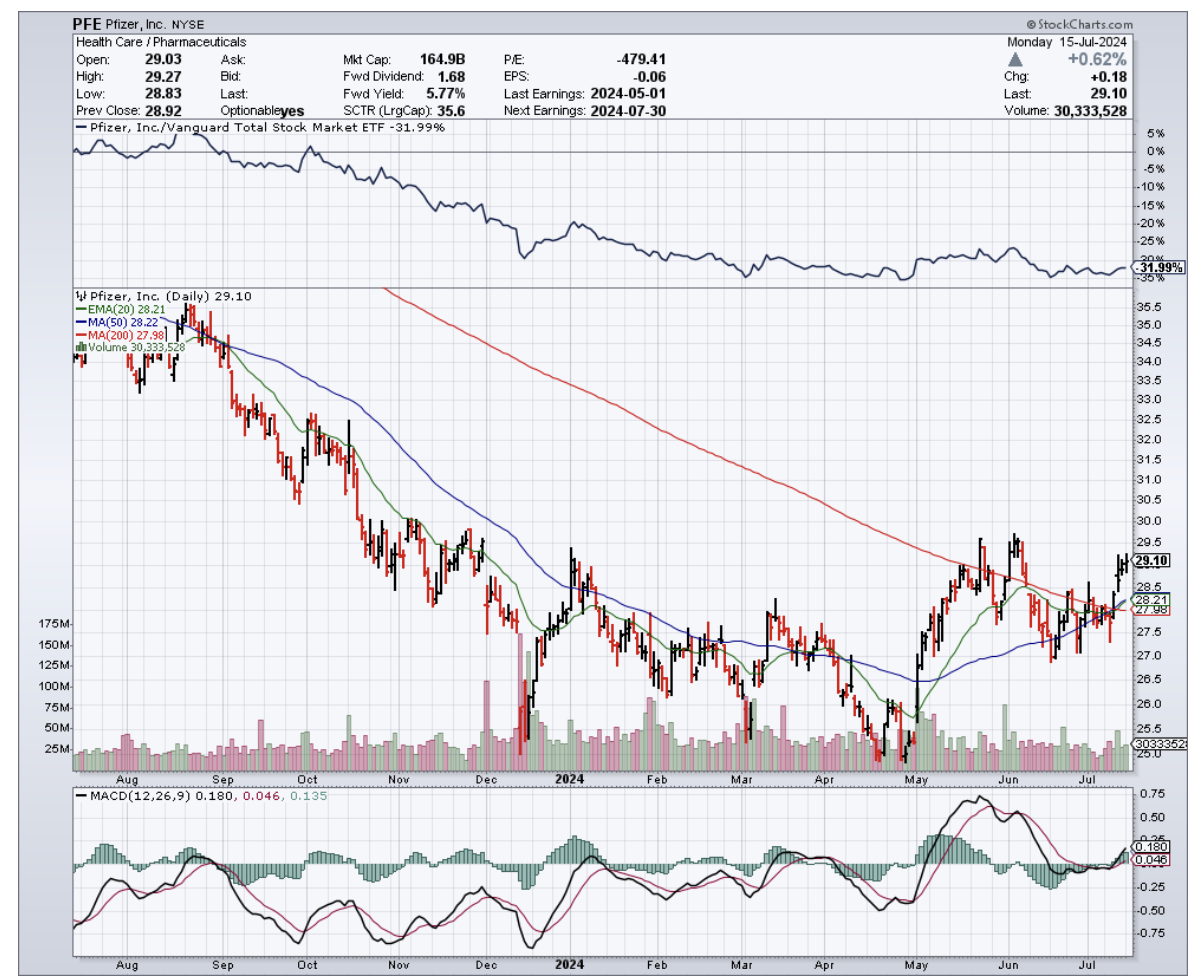
Mad Hedge Biotech and Healthcare Letter
July 16, 2024
Fiat Lux
Featured Trade:
(SMALL GIANTS RISING)
(GMAB), (OPHLY), (VRTX), (INCY), (BIIB), (AHKSY), (ALNY), (ARGX), (BGNE), (MRNA), (NBIX), (BNTX), (IPSEY), (CTLT), (NVO), (LLY), (JNJ), (GILD), (ABBV), (MRK), (SNY), (BMY), (GSK)
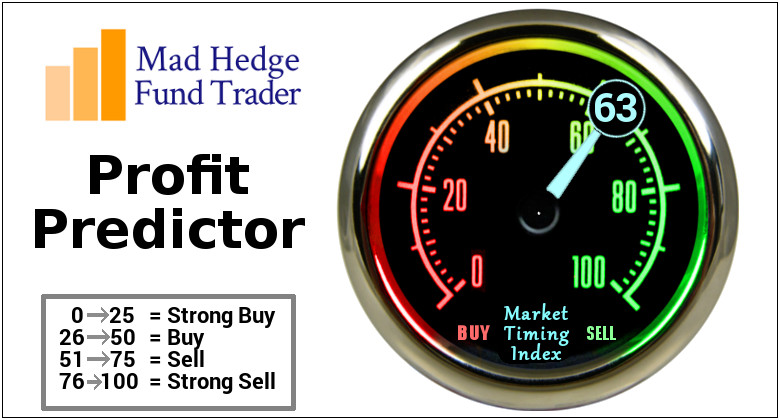
Remember when David took down Goliath? Well, history's repeating itself in the biotech arena, and this time, David's got deep pockets and a Ph.D.
Since April, I've been watching a trend on the so-called "next-generation" players in biotech and healthcare world. It reminds me of the massive changes I witnessed in Asian markets back in the '70s.
Over the past months, companies like Genmab (GMAB), Ono Pharmaceutical (OPHLY), Vertex (VRTX), Incyte (INCY), Biogen (BIIB), and Asahi Kasei (AHKSY) have been making waves that would impress even the most seasoned surfer. And these next-gen dealmakers aren't just dipping their toes in the M&A pool - they're doing cannonballs.
With cash reserves that would make Scrooge McDuck blush, these companies are overturning industry norms, already joining the prestigious $100 billion market cap club. At this celebration, the champagne flows freely.
So, what’s the play here?
With IPOs cooling down like day-old coffee, companies eyeing public debuts are now ripe targets for acquisition, more tempting than a juicy peach.
This fresh class of biotechs, unphased by the FTC's scrutiny that acts like kryptonite to pharma giants, are acting more like rocket fuel for these agile consolidators.
They slide through regulatory gaps faster than a greased pig at a county fair, grabbing six out of ten biopharma M&A deals in the second quarter alone. They’re not just taking a slice of the pie—they’re rewriting the recipe.
And if we're talking about firepower? These newcomers boast an average of $3.8 billion in pro forma adjusted cash, which isn't just walking-around money — that's "buy a small country" money.
But don't think for a second that this cash is just sitting pretty in their coffers. These upstarts are putting their money where their mouth is.
Take Incyte, for instance. They flexed their financial muscle with a $2 billion buyback in May 2024, sending a clear message to the market: "We're here to play, and we're playing to win."
And that's just the tip of the iceberg. The industry as a whole is lounging on a cool $1.5 trillion. That's enough liquidity to stretch the imagination — perhaps even to purchase a small planet. Mars, anyone? Elon might give us a discount.
But this financial might isn't just about buying power – it's about survival. As I said before, Big Pharma is teetering on a patent cliff that threatens to erode their revenue streams. To stay competitive, they're scrambling to replenish their pipelines, acquiring promising assets and gobbling up innovative technologies with the voracity of Pac-Man on steroids. And it's not just the usual suspects making moves.
This sense of urgency has created a fertile ground for an emerging cohort of aggressive dealmakers. Companies like Alnylam (ALNY), argenx (ARGX), BeiGene (BGNE), Moderna (MRNA), Neurocrine Biosciences (NBIX), BioNTech (BNTX), and Ipsen (IPSEY) are biting off more than the market expected them to chew, and they're coming to the table hungry.
And these companies aren't just nibbling around the edges. They're making bold moves, acquiring cutting-edge biotech firms with promising pipelines. We're talking oncology, epilepsy, kidney diseases, cardiovascular plays – it's like someone turned a medical textbook into a shopping catalog.
In fact, even the big boys are flexing their muscles.
Novo Holdings (NVO) dropped a jaw-dropping $16.5 billion on Catalent (CTLT). That's not even for a drug - it's for manufacturing. Talk about betting on the picks and shovels in this biotech gold rush.
Eli Lilly (LLY) just plunked down $3.2 billion on Morphic Therapeutic (MORF), betting big on inflammation, immunity, and oncology.
Johnson & Johnson's (JNJ) been on a shopping spree, too, snagging Numab's Yellow Jersey for $1.25 billion and Proteologix for $850 million. Both plays in inflammation and immunity - clearly, they've found their sweet spot.
Biogen's not twiddling its thumbs either, striking a deal with HI-Bio worth up to $1.8 billion.
Not to be outdone, Gilead (GILD) shook hands with CymaBay Therapeutics to the tune of $4.3 billion. Even AbbVie (ABBV), playing it cooler, still dropped a cool $250 million on Celsius.
Meanwhile, Merck's (MRK) set its sights on EyeBio for up to $3 billion, focusing on ophthalmology.
Sanofi (SNY), Bristol Myers Squibb (BMY), GSK (GSK) - they're all in, placing their chips on everything from rare diseases to generics to asthma. Clearly, the Big Pharma giants are also trying to keep up with this shift.
As the biotech field evolves, watching these underdogs will be like watching history in the making — where today's Davids become tomorrow's Goliaths. I suggest you keep a close eye on the names above. Adding them to your portfolio would mean you’re not just watching the giants rise — you’ll be a part of the story.
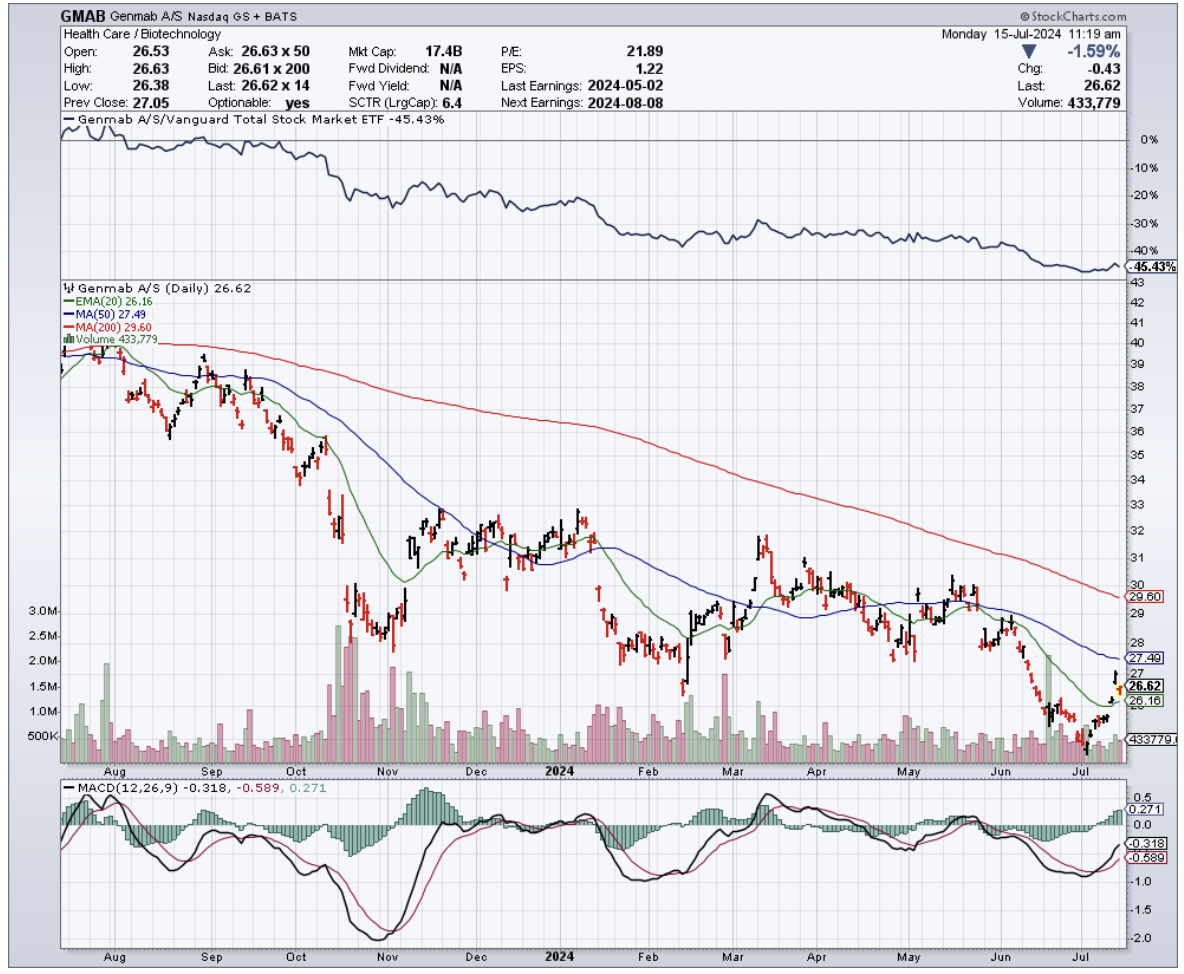
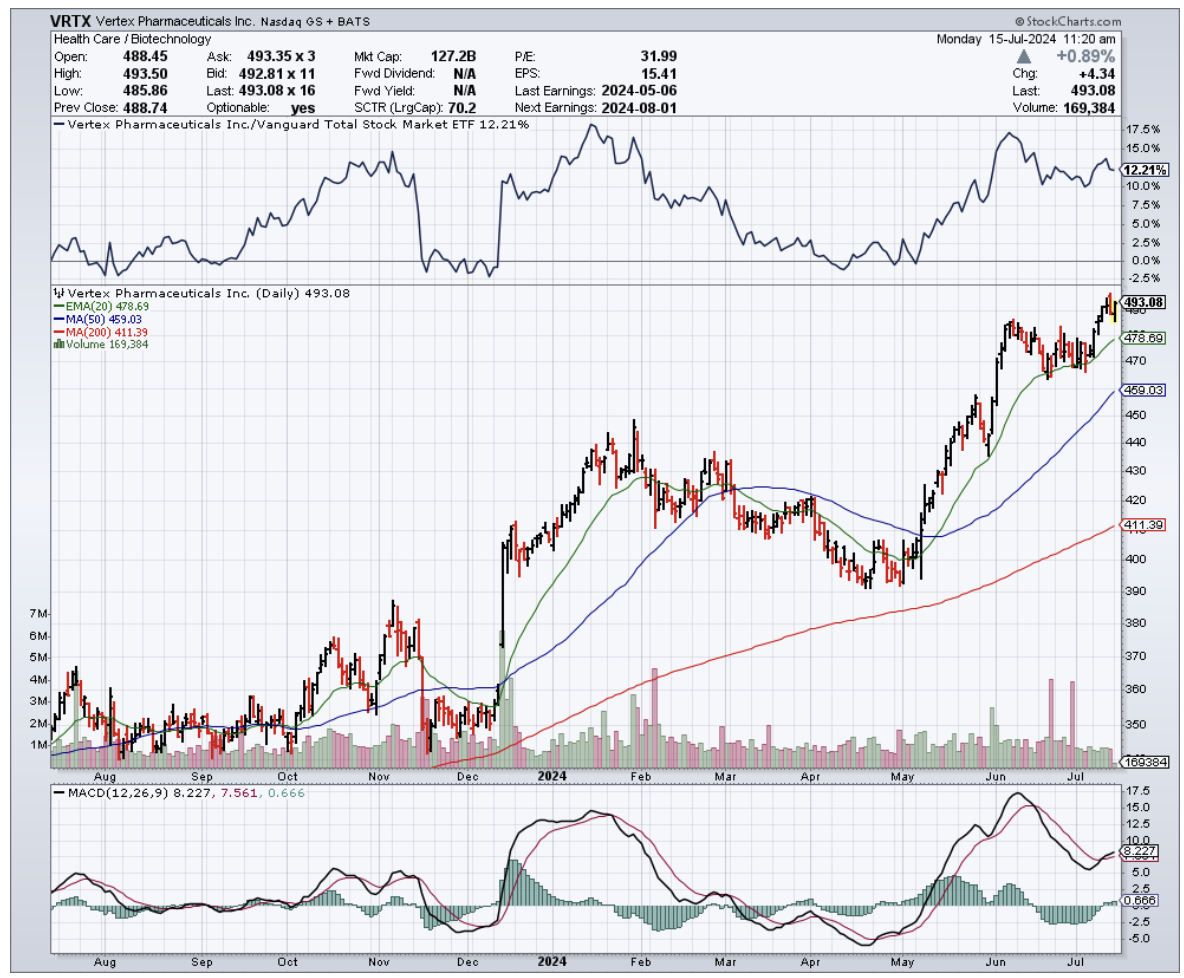
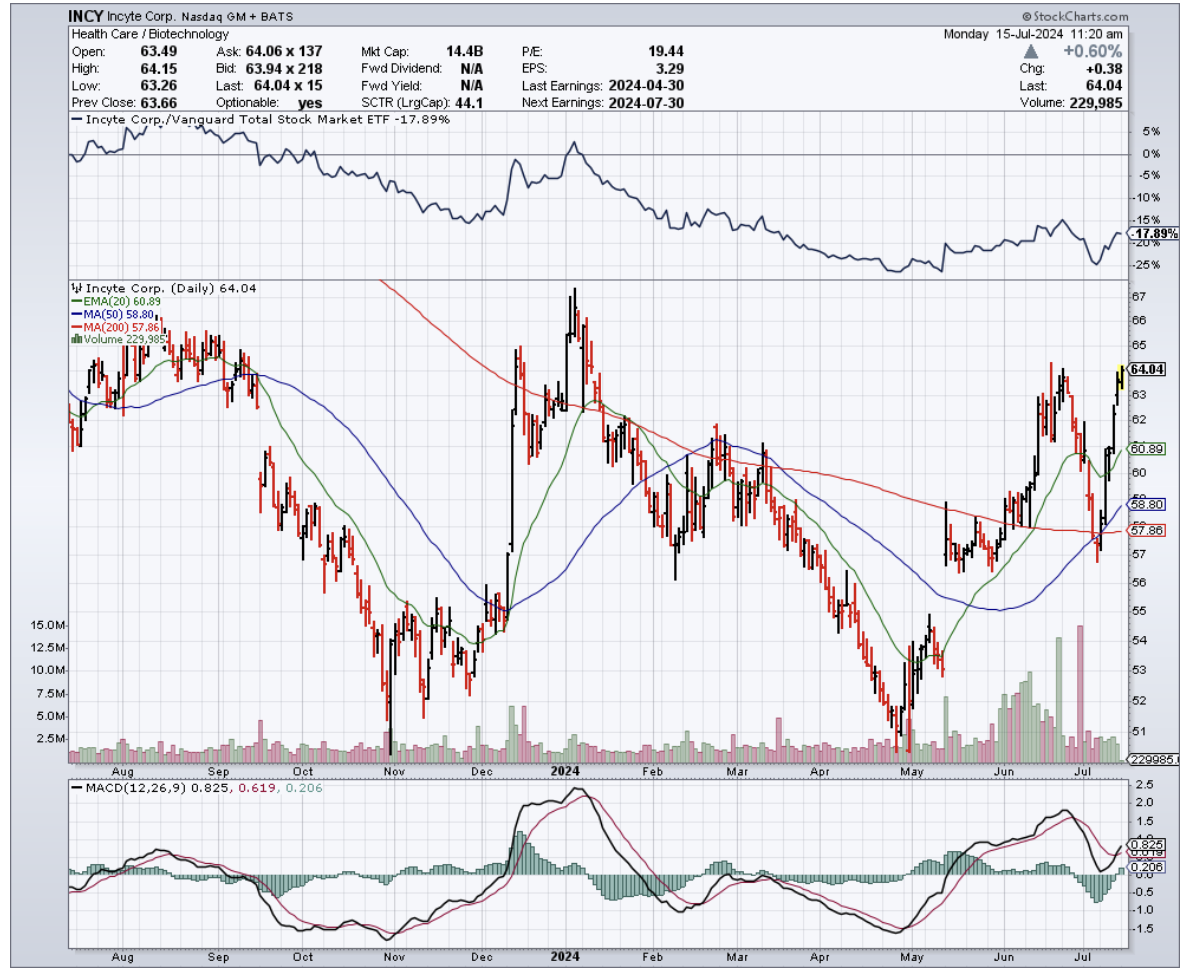
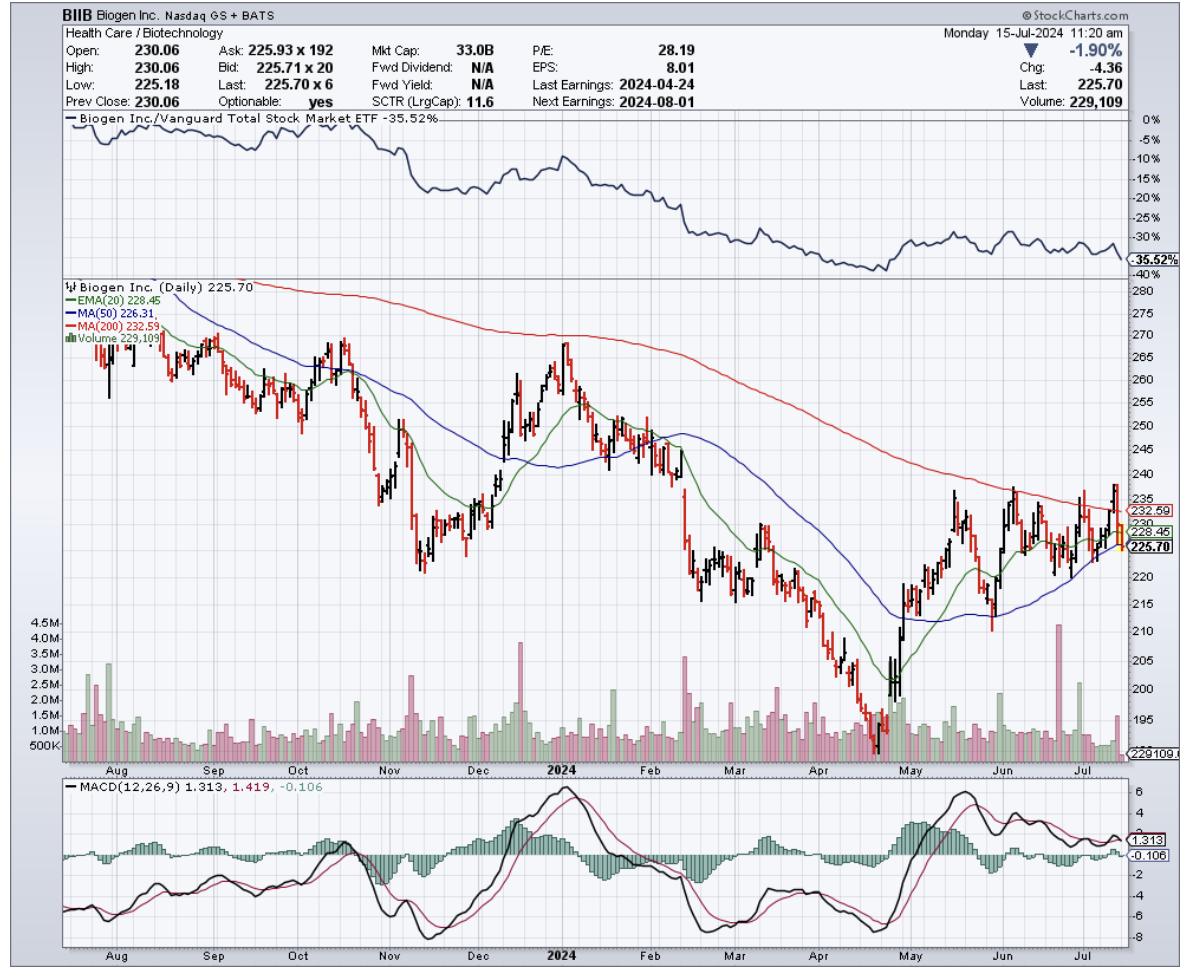
Mad Hedge Biotech and Healthcare Letter
July 11, 2024
Fiat Lux
Featured Trade:
(FORGET THE CASINO, INVEST IN THE HOUSE)
(TMO), (BIO), (DHR), (A)

I've always had a soft spot for healthcare innovation. But let me tell you, picking winners in this sector is trickier than trying to nail jello to a wall. You've got regulatory hurdles, fierce competition, and funding risks that'd make a Vegas bookie sweat.
That's why I'm a big fan of buying the arms dealers in this war on disease. I'm talking about the suppliers. These companies are calmly sitting pretty, ready to cash in on the general need for innovation without getting their hands too dirty.
Enter Thermo Fisher Scientific (TMO), the Waltham, MA-based behemoth that's supplying everyone from big pharma to your local hospital. They're slinging lab equipment faster than a short-order cook at a greasy spoon, and business is booming.
Just look at the numbers. Over the past decade, TMO's delivered a 400% total return. That's not just beating the S&P 500 – it's leaving it in the dust by 170 points.
And recently, Thermo Fisher just got the green light from those sticklers at the UK antitrust office to close a $3.1 billion deal for Olink, a Swedish outfit that's cooking up some serious magic in protein analysis.
We're talking about technology that can analyze hundreds of proteins faster than you can say "proteomics."
Speaking of proteomics, for those of you who slept through biology class, it's the study of proteins in biological systems. These little buggers are the muscle behind everything your body does.
While DNA is the blueprint, proteins are the construction crew that brings that blueprint to life. Figuring out how these microscopic workers operate is the golden ticket to a treasure trove of new drugs and therapies.
It's a growing field, with the global market expected to explode from $32.8 billion in 2023 to a whopping $161.9 billion by 2035. That translates to a compound annual growth rate of 14.2%.
As expected, Thermo Fisher isn't the only player in this game. You've got heavyweights like Bio-Rad Laboratories (BIO), Danaher Corporation (DHR), and Agilent Technologies (A) all jockeying for the top position.
But thanks to this recent Olink acquisition, Thermo Fisher's looking to pull ahead like a thoroughbred at the Kentucky Derby.
For better context, let's break down what this means for TMO's bottom line. Their mass spectrometry business, already a cash cow, could see a 5% bump in market share.
We're talking about an extra $475 million in revenue by 2028, with profit margins that'd make a hedge fund manager blush.
And that's just the tip of the iceberg. Their protein assays and kits business could see a 10% boost in market share, translating to another $450 million in revenue.
Despite these, Thermo Fisher isn't resting on its laurels. They're also partnering up with the likes of Bayer (BAYRY) to develop next-generation sequencing tools.
Next, let's talk dividends. I know, I know, a 0.3% yield isn't going to have you popping champagne. That's barely enough for a value meal at McDonald's. But don't let that fool you.
This company's been growing its dividend faster than a beanstalk on Miracle-Gro, with a five-year CAGR of 15.5%. It's not TMO's fault their stock price keeps outrunning their dividend.
Looking ahead, Thermo Fisher is projected to reach a 12% EPS growth in 2025 and 11% in 2026. It's like watching a rocket take off in slow motion.
Before you jump aboard though, I'll be honest with you.
At a P/E ratio of 26.6x, TMO isn't exactly on the bargain rack. It's priced like a fine wine, not a box of Franzia. But hey, quality costs money, and this is a company that's been delivering returns of 16.7% per year since 2004.
So, what's the takeaway here? Well, it’s clear that Thermo Fisher Scientific is a powerhouse in the healthcare and biotech sectors.
But, it's not going to give you the cheap thrills of a biotech startup that might cure cancer or go belly-up next week.
Instead, it's the steady Eddie that's going to keep chugging along, supplying the tools that make those moonshots possible.
If you're looking for income, well, this ain't your horse. But if you want growth with a side of stability, Thermo Fisher might just be the ticket. It's got more potential than a kid with a 4.0 GPA and a mean fastball.
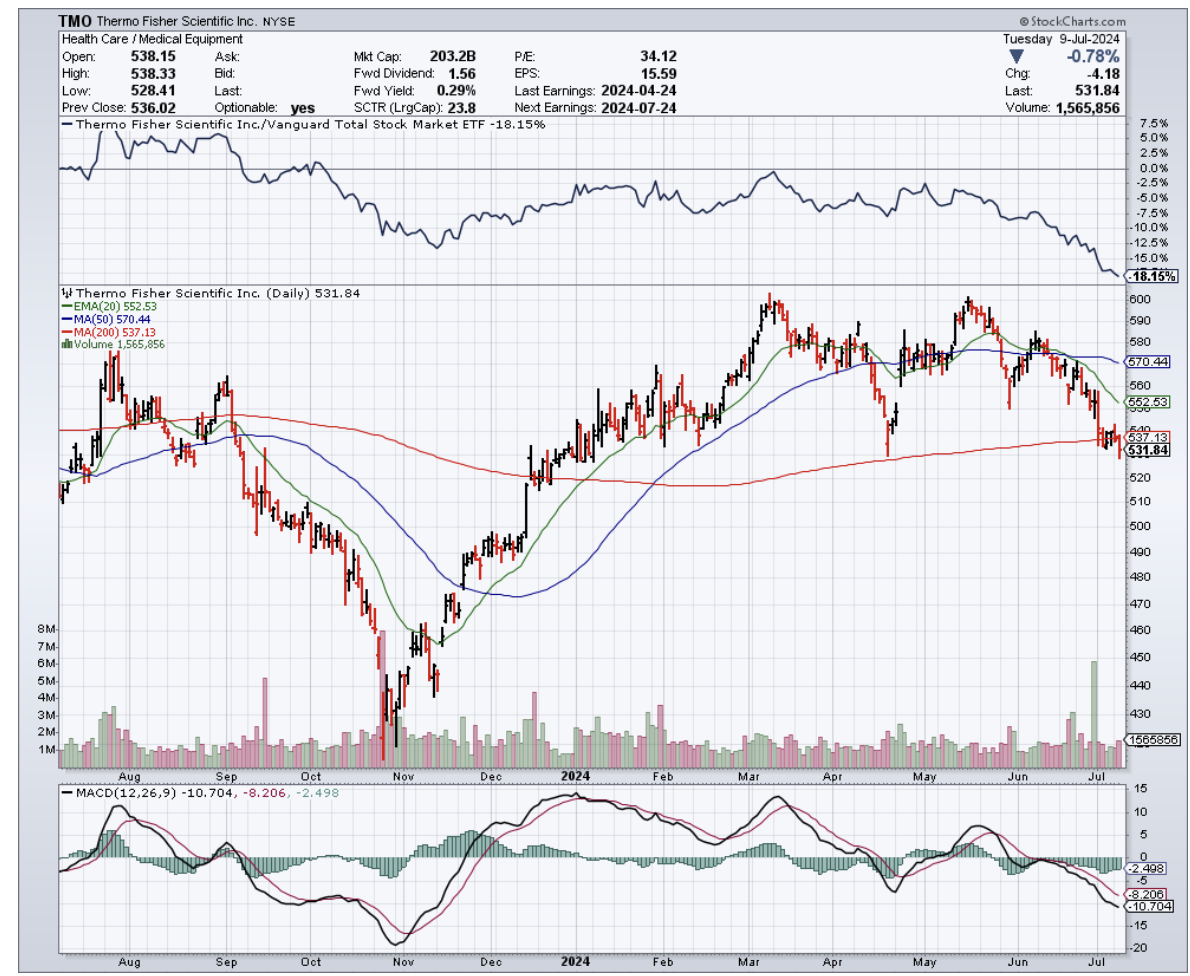
Mad Hedge Biotech and Healthcare Letter
July 9, 2024
Fiat Lux
Featured Trade:
(PLAQUE TO THE FUTURE)
(LLY), (TSLA), (V), (WMT)
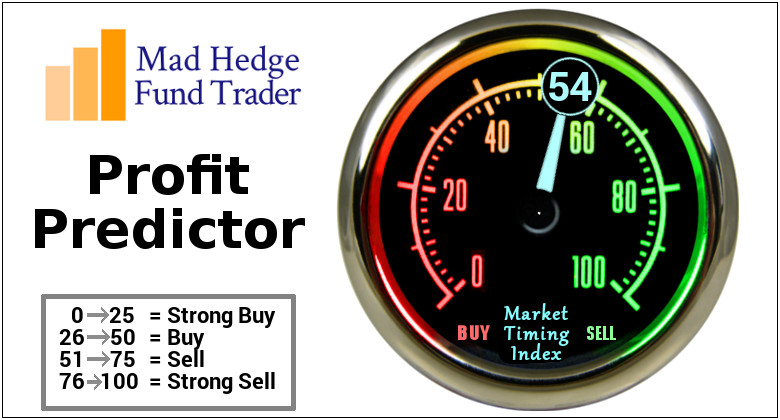
It's time we talk about a company that's been hotter than a two-dollar pistol at a Texas gunfight. I'm talking about Eli Lilly (LLY), the pharmaceutical juggernaut that's been turning heads faster than a Wall Street trader spotting a million-dollar bill on the sidewalk.
The last time we chatted about Lilly, we were salivating over their obesity wonder drug, Zepbound. Well, hold onto your hats, because that little pill has catapulted Lilly into the big leagues.
We're talking about an $816 billion market cap. That's not just big - it's “move over Tesla (TSLA), Visa (V), and Walmart (WMT)” big.
Let me throw some numbers at you for better context. Zepbound, which only got the FDA nod in November 2023, already raked in a cool $517 million in Q1.
But that's chump change compared to what's coming - we're looking at projected sales north of $16 billion per year by 2029. That's billion with a “B,” as in “Boy, I wish I'd bought more Lilly stock.”
Still, Lilly isn't content with just one golden goose. Oh no, they've gone and done it again, this time in the Alzheimer's arena.
The FDA gave their new drug, Kisunla, the green light earlier this month, and this one isn’t some. This stuff is like a cognitive Roto-Rooter, clearing out those amyloid plaques that turn your brain into Swiss cheese. We're looking at a potential 35% slowdown in cognitive decline.
Now, as we all know, Lilly isn't the only player in this game.
Biogen's (BIIB) been stumbling around with Leqembi like a drunk at a bar mitzvah, and Lilly's been taking notes. It's called the second-mover advantage, and Lilly's playing it like a pro.
Here's where it gets even more interesting. Lilly's pricing Kisunla at a wallet-busting $32,000 a year. That's not just aggressive, that's “charging-a-bull-with-a-red-cape” aggressive, especially when Biogen's asking a mere $26,500 for Leqembi. That's chutzpah, my friends, but it's the kind of gamble that could pay off big time.
Speaking of paying, let's talk numbers. Lilly's Q1 earnings were impressive, with revenue up 26% year-over-year to $8.77 billion. Net income? A cool $2.24 billion. And they're so confident, they've jacked up their full-year guidance by $2 billion.
That’s not where the good news ends, though. After all, Lilly has proven time and again that it’s not just a one-trick pony. If anything, this biotech and healthcare giant has a stable of thoroughbreds bringing in the big bucks.
There’s Mounjaro for diabetes, which is their star player, raking in $1.81 billion in Q1 alone. And let's not forget about Verzenio for breast cancer, Jardiance for diabetes and heart failure, and Taltz for psoriasis. It's like they've got a drug for everything but mediocrity.
Now, I know what you're thinking. "But John, what about the dividends?" Well, Lilly's just boosted them by 15% for 2024. Sure, the yield looks as thin as a supermodel's waistline at 0.6%, but that's only because the stock price has been on a rocket ride to the moon.
We're talking about a 717% increase in five years. That's not a bull run – that's a full-on bull stampede.
So, what's the best way to play this? Well, if you're looking for a short-term bet, I'd be as nervous as a long-tailed cat in a room full of rocking chairs. This stock's priced for perfection, and Wall Street can be fickle.
But for the medium to long haul? Lilly's looking sweeter than grandma's apple pie. They've got the products, they've got the pipeline, and they've got more momentum than a freight train going downhill.
In the world of biotech and pharma, Lilly's not just playing the game - they're changing it. And in my humble opinion, that makes them a Buy with a capital B.
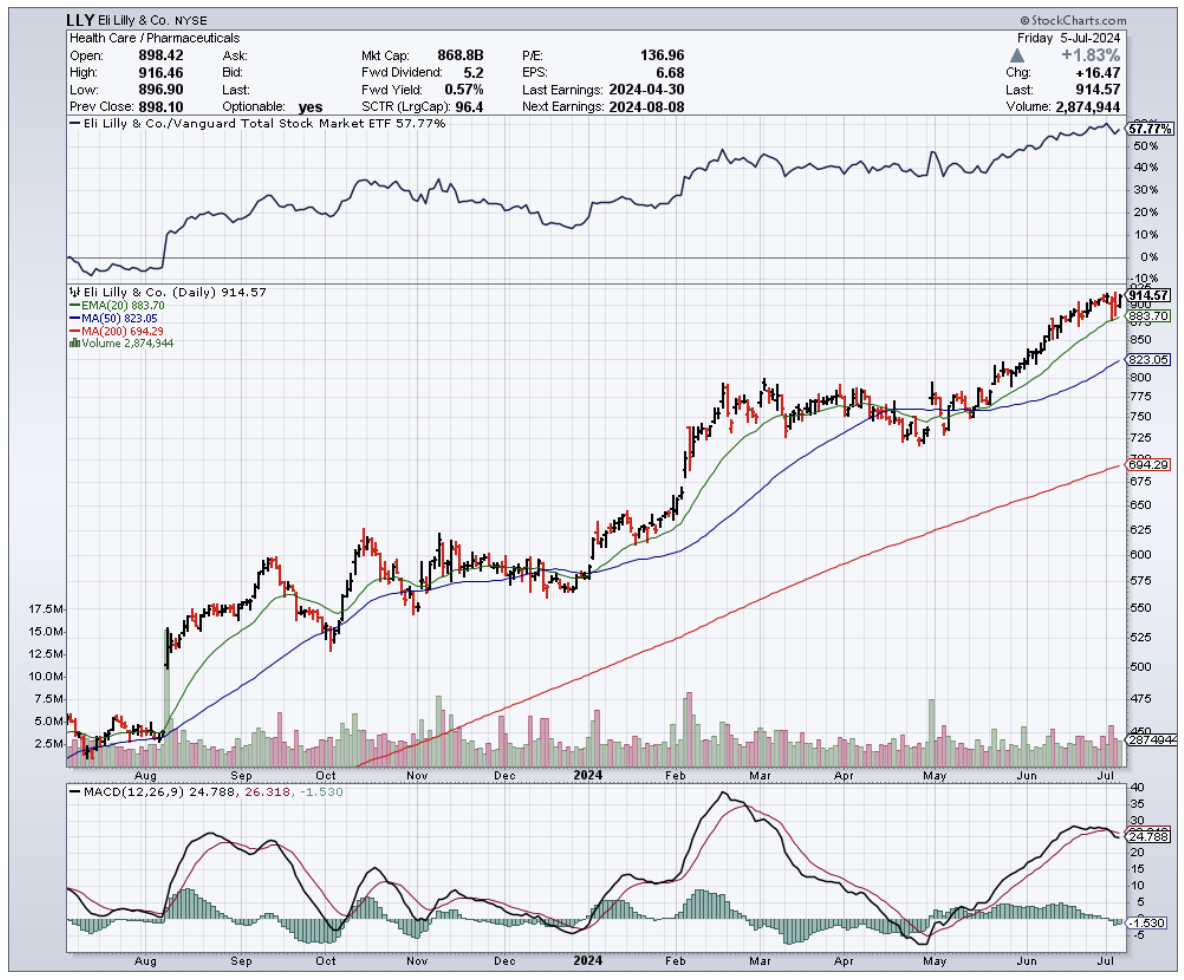
Mad Hedge Biotech and Healthcare Letter
July 2, 2024
Fiat Lux
Featured Trade:
(TWO-STEPPING TO A CANCER CURE)
(GILD), (AZN), (RHHBY), (PFE), (MRK)
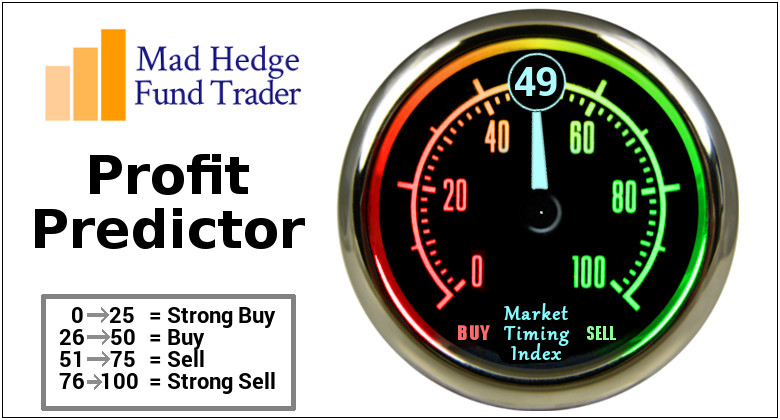
I was at a biotech conference in San Francisco, nursing a cup of black coffee and trying not to fall asleep during yet another startup pitch.
Suddenly, I overhear a conversation that makes me perk up faster than if someone had mentioned a 50% off sale on vintage aircraft parts.
"Did you hear about TwoStep Therapeutics?" someone whispered. "They've got Bertozzi, Cochran, and Levy on board."
Now, I've been following the biotech scene longer than I've been flying planes, and those names made my ears perk up faster than an air traffic controller during a thunderstorm. I nearly choked on my coffee trying to catch every word.
As it turns out, TwoStep Therapeutics isn't just another flash-in-the-pan biotech startup. These folks are diving headfirst into the shark-infested waters of immunotherapy and antibody-drug conjugates (ADCs).
And let me tell you, they're not packing pool noodles – they're armed to the teeth with intellectual firepower.
Now, I've seen more biotech startups than there are hedge funds in Connecticut, but this one's got my attention. Why? They're not here to do the same old cancer-fighting waltz.
Instead, they're attempting to solve a Rubik's Cube of cancer treatment – and they might just have the brainpower to do it.
Let's talk about that brainpower for a moment. TwoStep's advisory board reads like a "Who's Who" of biotech brilliance.
We're talking Nobel laureate Carolyn Bertozzi, Stanford's Jennifer Cochran, and Ronald Levy – the wizard behind rituximab. It's as if they raided the faculty lounge at Stanford and offered stock options instead of tenure.
That means TwoStep's not just another me-too biotech. They're cooking up a platform of peptide conjugates that can bind to five different tumor-associated integrins.
In layman's terms? They're building a cancer-fighting multi-tool that makes current treatments look like plastic sporks.
CEO Caitlyn Miller isn't just another lab coat with a PowerPoint presentation either. She's got skin in the game – or rather, genes.
Her stepfather battled oral cancer for 14 years before passing away. I don’t need to tell you, but that's the kind of motivation you just can't buy.
Now, before you start salivating over potential returns faster than Pavlov's dogs at dinnertime, remember: This is early-stage biotech.
We're talking more risk than a game of Russian roulette with five bullets. But for those of you with iron stomachs and a penchant for moonshots, TwoStep might be worth a spot on your watchlist.
Their $6.5 million seed round is chump change in biotech land, but it's not about the size of the boat, it's the motion of the ocean. And with backers like NFX and Alexandria Venture Investments, they've got some serious propulsion.
TwoStep isn't going after the low-hanging fruit either. They're not interested in well-trodden paths like bladder or breast cancer.
No sir, they're setting their sights on tough customers like head and neck and colon cancer. It's a gutsy move, but in biotech, sometimes you've got to swing for the fences.
It's worth noting, though, that TwoStep isn't alone in this high-stakes game.
Big pharma's been falling over themselves to get a piece of this action. Gilead Sciences (GILD) shelled out big bucks for Immunomedics to get their hands on Trodelvy.
AstraZeneca (AZN) has been playing in this sandbox for a while with Enhertu. Even the Swiss giant Roche (RHHBY) is in on the game, not to mention Pfizer (PFE) and Merck (MRK).
So, there you have it. TwoStep Therapeutics: the new enfant terrible of the biotech world, armed with more brainpower than a MENSA convention and ambitions that could make Elon Musk blush.
Will they revolutionize cancer treatment or become another cautionary tale in biotech textbooks?
The jury's still out, but one thing's for sure – watching this unfold will be more entertaining than a CNBC stock ticker on stimulus check day.
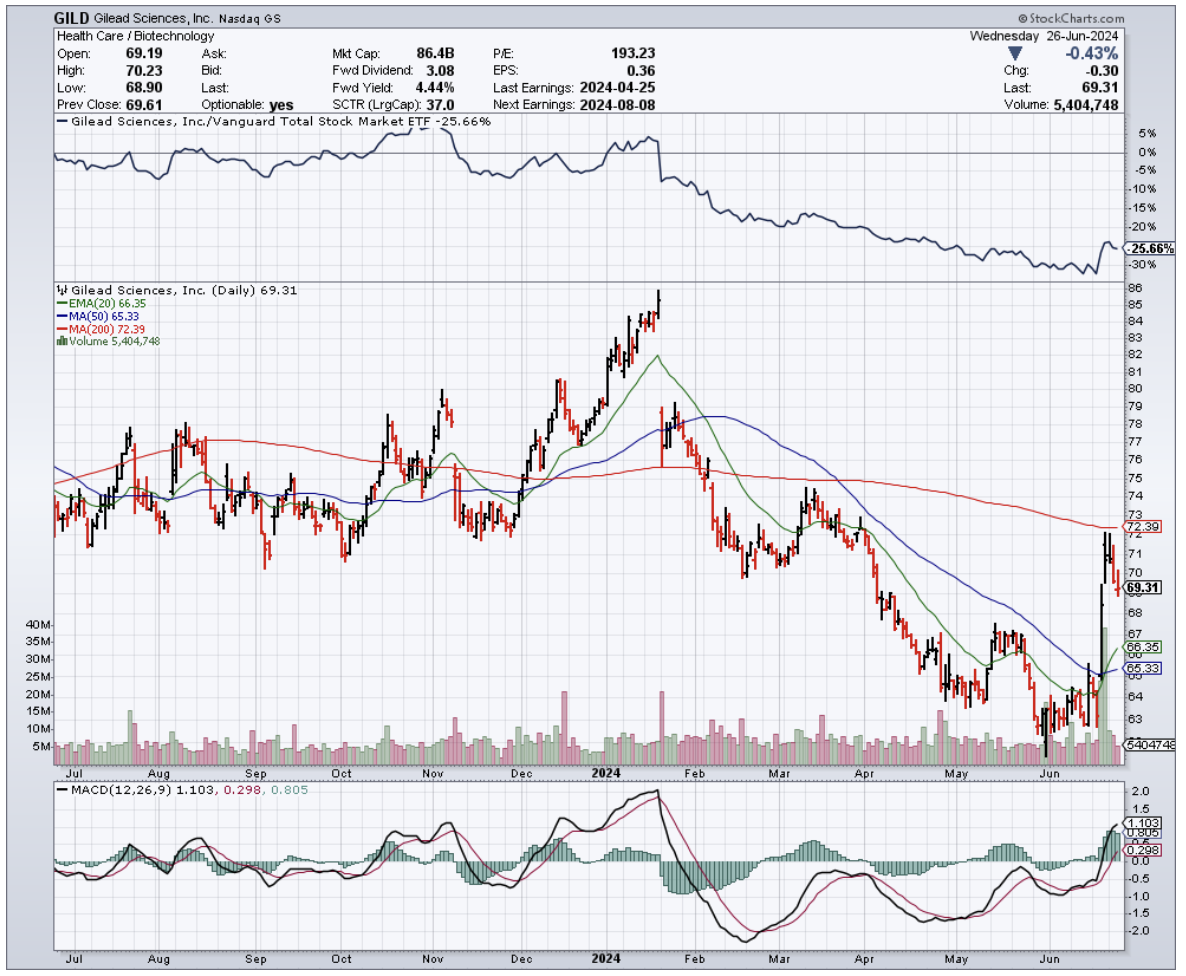
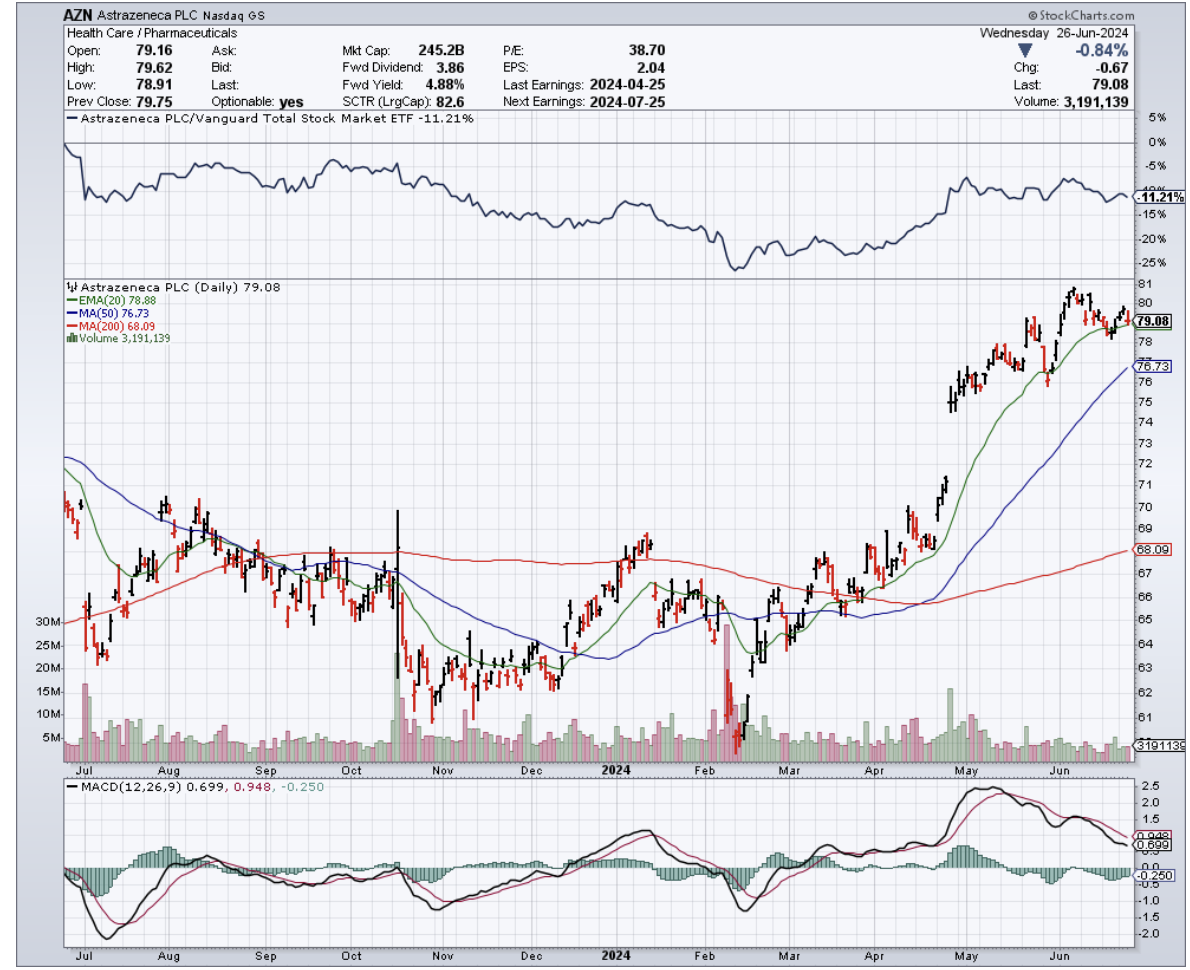
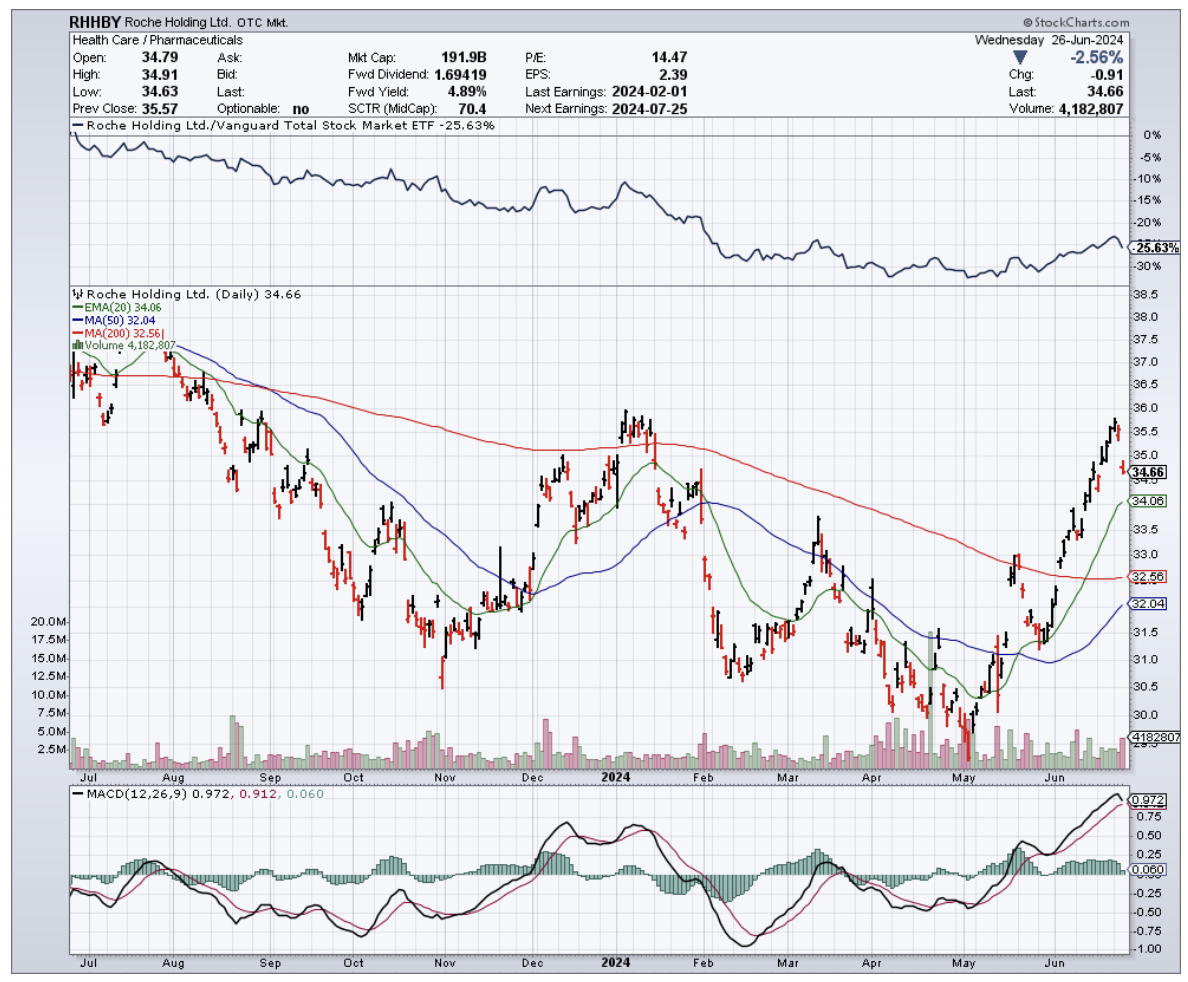

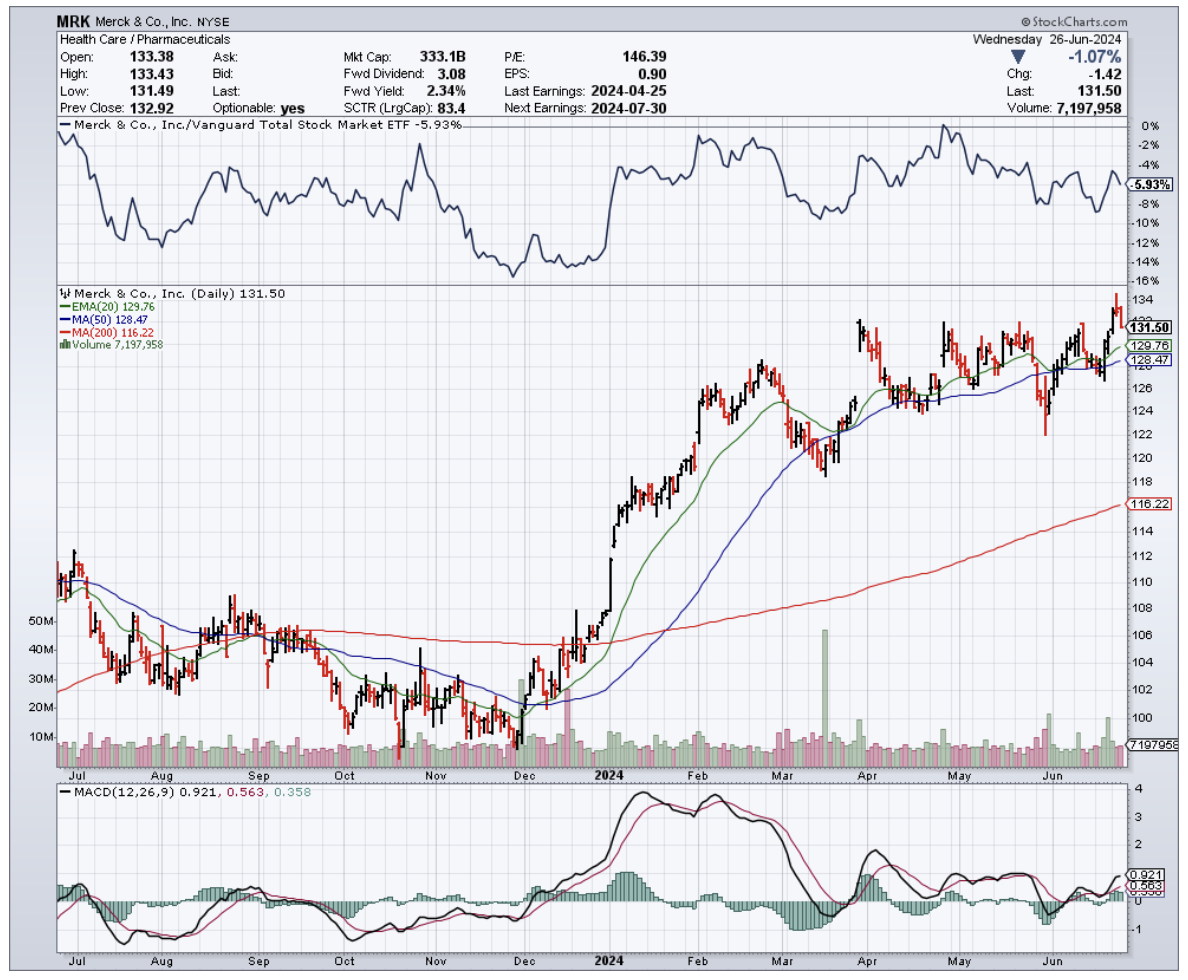
Legal Disclaimer
There is a very high degree of risk involved in trading. Past results are not indicative of future returns. MadHedgeFundTrader.com and all individuals affiliated with this site assume no responsibilities for your trading and investment results. The indicators, strategies, columns, articles and all other features are for educational purposes only and should not be construed as investment advice. Information for futures trading observations are obtained from sources believed to be reliable, but we do not warrant its completeness or accuracy, or warrant any results from the use of the information. Your use of the trading observations is entirely at your own risk and it is your sole responsibility to evaluate the accuracy, completeness and usefulness of the information. You must assess the risk of any trade with your broker and make your own independent decisions regarding any securities mentioned herein. Affiliates of MadHedgeFundTrader.com may have a position or effect transactions in the securities described herein (or options thereon) and/or otherwise employ trading strategies that may be consistent or inconsistent with the provided strategies.
This site uses cookies. By continuing to browse the site, you are agreeing to our use of cookies.
OKLearn moreWe may request cookies to be set on your device. We use cookies to let us know when you visit our websites, how you interact with us, to enrich your user experience, and to customize your relationship with our website.
Click on the different category headings to find out more. You can also change some of your preferences. Note that blocking some types of cookies may impact your experience on our websites and the services we are able to offer.
These cookies are strictly necessary to provide you with services available through our website and to use some of its features.
Because these cookies are strictly necessary to deliver the website, refuseing them will have impact how our site functions. You always can block or delete cookies by changing your browser settings and force blocking all cookies on this website. But this will always prompt you to accept/refuse cookies when revisiting our site.
We fully respect if you want to refuse cookies but to avoid asking you again and again kindly allow us to store a cookie for that. You are free to opt out any time or opt in for other cookies to get a better experience. If you refuse cookies we will remove all set cookies in our domain.
We provide you with a list of stored cookies on your computer in our domain so you can check what we stored. Due to security reasons we are not able to show or modify cookies from other domains. You can check these in your browser security settings.
These cookies collect information that is used either in aggregate form to help us understand how our website is being used or how effective our marketing campaigns are, or to help us customize our website and application for you in order to enhance your experience.
If you do not want that we track your visist to our site you can disable tracking in your browser here:
We also use different external services like Google Webfonts, Google Maps, and external Video providers. Since these providers may collect personal data like your IP address we allow you to block them here. Please be aware that this might heavily reduce the functionality and appearance of our site. Changes will take effect once you reload the page.
Google Webfont Settings:
Google Map Settings:
Vimeo and Youtube video embeds:
